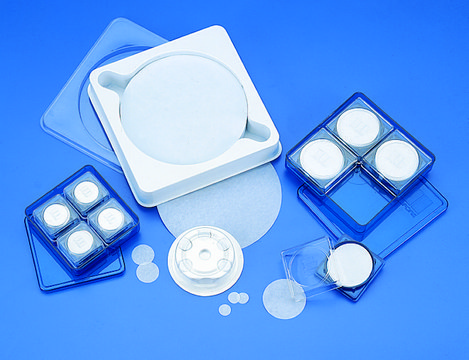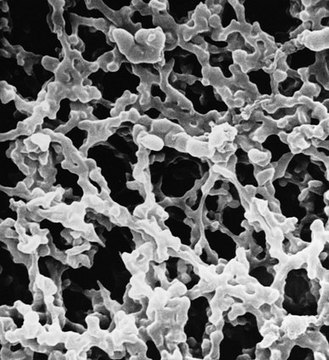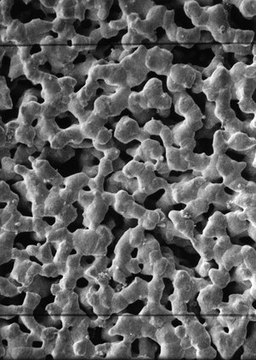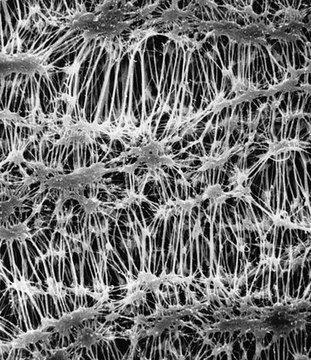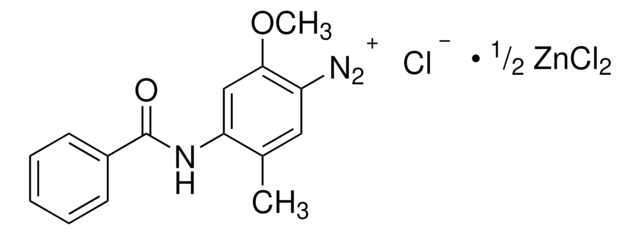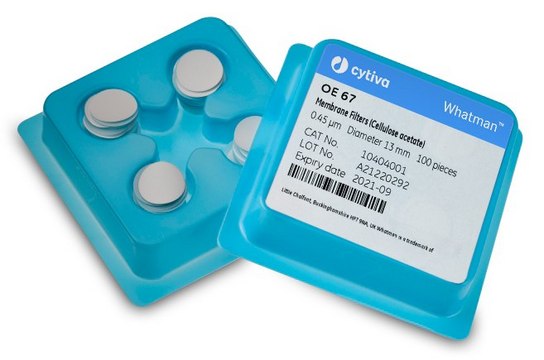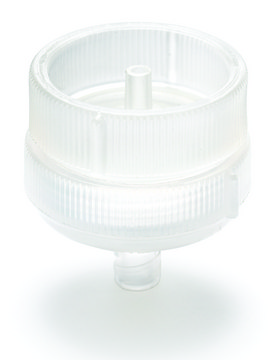N8520
Filter membranes, nitrocellulose
MF membrane, pore size 0.22 μm, diam. 25 mm
Sign Into View Organizational & Contract Pricing
All Photos(1)
About This Item
Recommended Products
material
MF membrane
manufacturer/tradename
Millipore GSWP02500
Millipore GSWP2500
diam.
25 mm
pore size
0.22 μm
Looking for similar products? Visit Product Comparison Guide
General description
Biologically inert nitrocellulose membranes containing a small amount of cellulose acetate for improved handling. Autoclavable to 121°C; use below 75°C. Chemically compatible with dilute acids and bases, hydrocarbons, and non-polar liquids. MF-Millipore membranes have water extractables <5%, including a Triton wetting agent TF-Millipore membranes are Triton-free and have even lower water extractables than MF membranes. See Immobilon-NC in the Electrophoresis Equipment section for nitrocellulose blotting membranes.
Signal Word
Danger
Hazard Statements
Precautionary Statements
Hazard Classifications
Flam. Sol. 1
Storage Class Code
4.1B - Flammable solid hazardous materials
WGK
WGK 3
Flash Point(F)
Not applicable
Flash Point(C)
Not applicable
Personal Protective Equipment
dust mask type N95 (US), Eyeshields, Gloves
Regulatory Information
新产品
Choose from one of the most recent versions:
Certificates of Analysis (COA)
Lot/Batch Number
It looks like we've run into a problem, but you can still download Certificates of Analysis from our Documents section.
If you need assistance, please contact Customer Support.
Already Own This Product?
Find documentation for the products that you have recently purchased in the Document Library.
Dinesh Chandra et al.
Clinical and experimental immunology, 154(2), 224-234 (2008-09-10)
The failure of Leishmania, an intracellular pathogen, to stimulate a pro-inflammatory response following entry into macrophages has been well reported. This occurs in spite of the fact that ligands for the toll-like receptors (TLR) have been recently shown on the
Our team of scientists has experience in all areas of research including Life Science, Material Science, Chemical Synthesis, Chromatography, Analytical and many others.
Contact Technical Service
